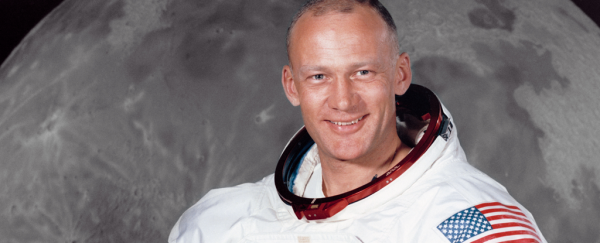Buzz Aldrin is a former American astronaut and the second person to ever set foot on the Moon, minutes after Neil Armstrong in 1969.
Unlike Armstrong, who traded fame for a reclusive rural lifestyle in retirement, Aldrin has been an outspoken advocate for space exploration, writing books and making numerous media appearances.
In retirement Aldrin has spoken out in support of research and funding for expeditions to Mars, claiming in a 2013 New York Times article that the Moon should be regarded as a "point of departure, one that places humankind on a trajectory to homestead Mars and become a two-planet species."
How did Buzz become an astronaut?
Aldrin's career as an astronaut has its foundations in a strict military upbringing that saw him enter the United States Air Force at age 21, with plans to become a fighter pilot. He flew scores of combat missions in the Korean war and earned multiple Distinguished Flying Crosses for his exceptional offensives.
On return to the US during the war's ceasefire, Aldrin studied aeronautics and astronautics at Massachusetts Institute of Technology. His PhD on flying spacecraft close together (not to mention the fact no astronaut had previously possessed a PhD) would earn him the nickname "Dr. Rendezvous" when he was accepted into NASA's burgeoning space flight program in 1963.
Aldrin didn't only put his studies to use as an authority in docking techniques; he also helped pioneer the first spacewalk training programs using underwater simulations.
During a low orbit flight on the Gemini 12 mission with fellow astronaut Jim Lovell, Aldrin conducted one of the longest spacewalks to date, floating outside the capsule for five hours. During this excursion he would also take the first ever space selfie.
Why was Buzz the second man on the Moon?
In 1969, Aldrin was bestowed the position of lunar module pilot for the historic Apollo 11 mission. It all might not have been - chief astronaut Deke Slayton acknowledged Aldrin's personality 'grated' on other astronauts, so he gave mission commander Neil Armstrong an option to go with an alternative. Armstrong ultimately stuck with Aldrin.
Preliminary checklists made by NASA would have had the module pilot step out onto the Moon's surface first, though other protocol awarded the privilege to the commander. In the end, it was Armstrong's position near the capsule door that determined his exit.
Aldrin describes his experience of the Moon as one of 'magnificent desolation'. "It was the most desolate thing I could ever think of," he told National Geographic in 2016.
Bio
Born: January 20, 1930, to US Air Force colonel Edwin Eugene Aldrin and Marion Moon, the daughter of an Army chaplain.
As a person: Aldrin suffered heavily from chronic depression for periods following his Apollo mission. With a history of mood disorders in his family - including loss from suicide - Aldrin himself has speculated the condition could be genetic.
Born Edwin Eugene Aldrin Jr., Aldrin was bestowed his famous nickname when his younger sister, Fay, mispronounced 'brother' as 'buzzer'. Not only did it stick, but Buzz became Aldrin's legal first name in 1988.
All Explainers are determined by fact checkers to be correct and relevant at the time of publishing. Text and images may be altered, removed, or added to as an editorial decision to keep information current.
